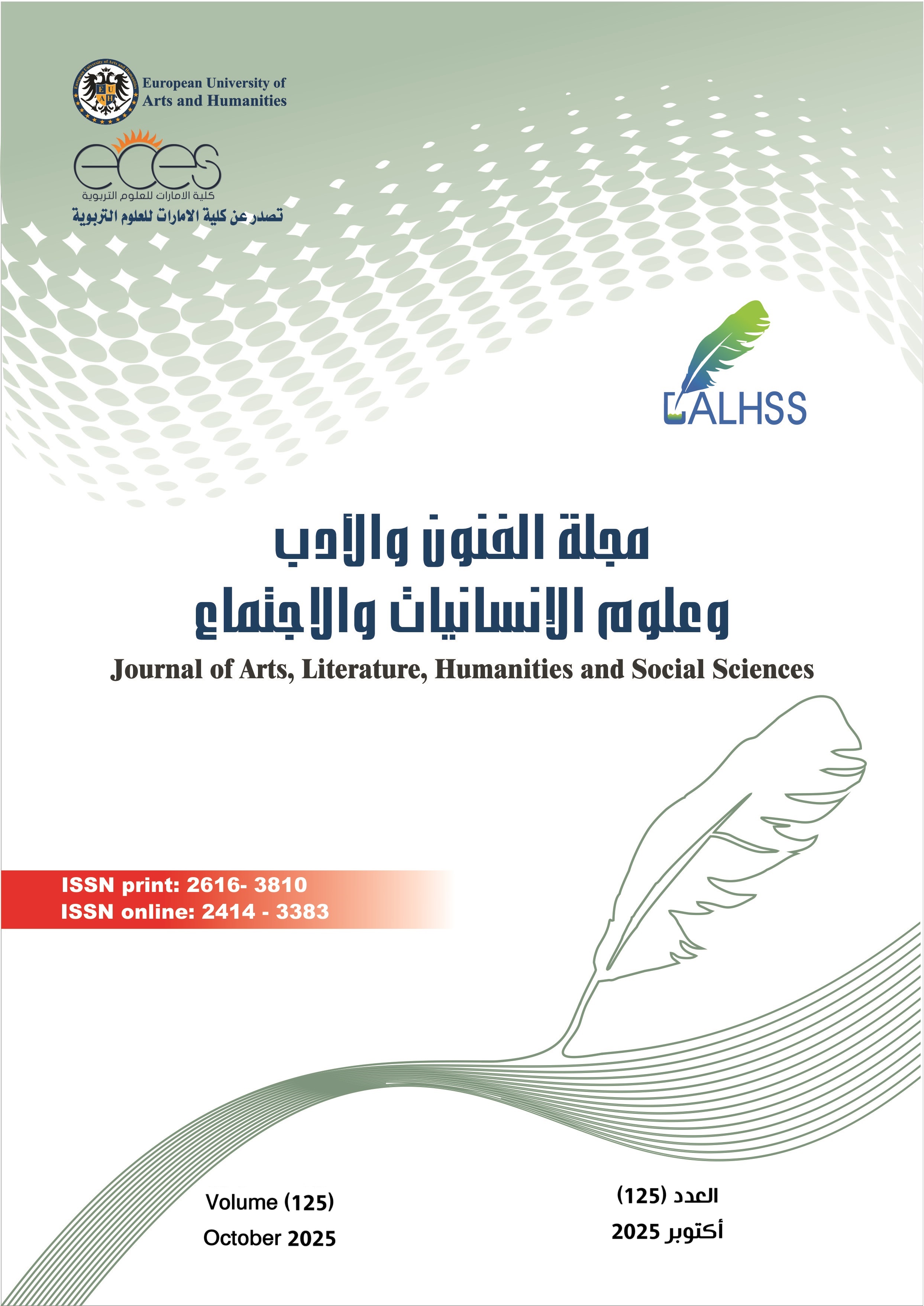The Modifiable Areal Unit Problem (MAUP) in Geographic Information Systems
(An Applied Study on Population Density)
Abstract
The study analyzes the impact of the spatial scale effect as a main dimension of the Modifiable Areal Unit Problem (MAUP) using 2022 population data of Jazan City, assessing how changing grid size affects spatial analysis and emphasizing the need to consider scale in aggregated data. Following a spatial analytical methodology, the work began with building three spatial grids (200 m, 400 m, 800 m) based on the 100 m grid, then population density was calculated in the four areal units, then scale-effect analyses were carried out through descriptive statistics and Global and Local Moran’s I to produce charts and maps. Results show that mean population density decreases gradually as grid size increases and that deviation from normal distribution declines in the 800 m grid, making the distribution appear relatively symmetrical. Maps reveal that larger spatial units change the density pattern: smaller grids give a more precise and detailed view of spatial variation, while larger grids yield a more generalized and homogeneous pattern and lose fine-scale detail. Global Moran’s I values vary with scale: the 100 m grid shows strong local spatial clustering, and the 800 m grid also shows clustering but likely from broader, less detailed groupings. Local Moran’s I scatterplots indicate that spatial autocorrelation between population density and neighboring values is affected by unit size. Local Moran’s I maps display a gradual pattern of the scale effect within MAUP. With the fine 100 m grid, the maps capture numerous high- and low-density clusters and detailed local transitions, whereas at 800 m clusters are minimal and local details almost absent, reflecting increased generalization and loss of fine-scale relationships. The findings confirm the significant influence of spatial scale on MAUP analysis and recommend multi-scale analysis and explicit consideration of MAUP effects in spatial studies.
References
2. الهيئة العامة للإحصاء، (2023)، تقرير البيانات الوصفية لإحصاءات (الطبقات الشبكية لتعداد السعودية 2022).
3. Briz-Redón, Á., Martínez-Ruiz, F., & Montes, F. (2019). Investigation of the consequences of the modifiable areal unit problem in macroscopic traffic safety analysis: A case study accounting for scale and zoning. Accident Analysis & Prevention, 132, 105276. https://doi.org/10.1016/j.aap.2019.105276
4. Cima, E. G., Rocha-Junior, W. F. da, Uribe-Opazo, M. A., & Dalposso, G. H. (2021). Modifiable Areal Unit Problem (MAUP): Analysis of agriculture of the state of Paraná-Brazil. Agris on-line Papers in Economics and Informatics, 13(2), 19–28.
5. Esri. (n.d.-a). How Spatial Autocorrelation (Global Moran’s I) works. ArcGIS Pro Tool Reference. Retrieved September 13, 2025, from https://pro.arcgis.com/en/pro-app/latest/tool-reference/spatial-statistics/h-how-spatial-autocorrelation-moran-s-i-spatial-st.htm.
6. Esri. (n.d.-b). How Cluster and Outlier Analysis (Anselin Local Moran’s I) works. ArcGIS Pro Tool Reference. Retrieved September 13, 2025, from https://pro.arcgis.com/en/pro-app/latest/tool-reference/spatial-statistics/h-how-cluster-and-outlier-analysis-anselin-local-m.htm.
7. Fotheringham, A. S., & Wong, D. W. S. (1991). The modifiable areal unit problem in multivariate statistical analysis. Environment and Planning A, 23(7), 1025–1044. https://doi.org/10.1068/a231025.
8. Johns, M. (2010). The modifiable areal unit problem (MAUP) via cluster analysis [master's thesis, University of Southern California].
9. Lee, G., Cho, D., & Kim, K. (2016). The modifiable areal unit problem in hedonic house-price models. Urban Geography, 37(2), 223–245. https://doi.org/10.1080/ 02723638.2015.1069026
10. Lee, S.-I., Lee, M., Chun, Y., & Griffith, D. A. (2018). Uncertainty in the effects of the modifiable areal unit problem under different levels of spatial autocorrelation: A simulation study. International Journal of Geographical Information Science, 33(6), 1135–1154. https://doi.org/10.1080/13658816.2018.1542597.
11. Nelson, J. K., & Brewer, C. A. (2015). Evaluating data stability in aggregation structures across spatial scales: Revisiting the modifiable areal unit problem. Cartography and Geographic Information Science, 44(1), 35–50. https://doi.org/10.1080/15230406.2015.1093431.
12. Openshaw, S. (1984). The modifiable areal unit problem. Geo Books.
13. Swift, A., Liu, L., & Uber, J. (2008). Reducing MAUP bias of correlation statistics between water quality and GI illness. Computers, Environment and Urban Systems, 32(2), 134–148. https://doi.org/10.1016/j.compenvurbsys.2007.11.002.
14. Tuson, M., Yap, M., Kok, M. R., Murray, K., Turlach, B., & Whyatt, D. (2019). Incorporating geography into a new generalized theoretical and statistical framework addressing the modifiable areal unit problem. International Journal of Health Geographics, 18(1), 6. https://doi.org/10.1186/s12942-019-0170-3.
Copyright (c) 2025 د. ناديه بنت عوض السفري

This work is licensed under a Creative Commons Attribution-ShareAlike 4.0 International License.



